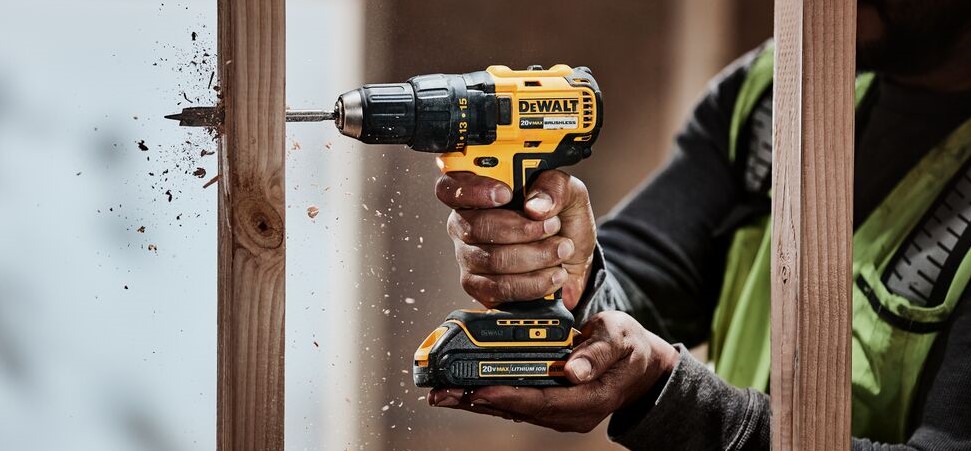Ever found yourself in a situation where you need to make a hole but don’t have a drill on hand? Whether you’re tackling a DIY project or making quick repairs, not having the right tools can be frustrating. Luckily, there are several clever methods to create a hole without a traditional drill, and you might already have the necessary items at home.
Tools and Materials Needed
You can create holes without a drill using items around your home. Gather the following tools and materials to start your project effectively.
Common Household Items
- Screwdriver: Utilize a flathead or Phillips screwdriver for penetrating materials like wood or drywall.
- Nail: Use a sturdy nail for making small holes in softer materials. A larger nail can create wider openings.
- Hammer: Strike the nail with a hammer to drive it into the material, allowing for easier hole creation.
- Scissors: Employ scissors for creating holes in thin materials such as cardboard or soft plastic.
- Awl: Use an awl to puncture holes in wood, leather, or fabric. This tool can make precise, small openings.
- Pliers: Utilize pliers to twist or tear materials apart, creating holes when needed.
Safety Gear
- Safety Glasses: Protect your eyes from debris by wearing safety glasses during the hole-making process.
- Gloves: Use work gloves to prevent cuts and scrapes when handling tools or materials.
- Dust Mask: Consider wearing a dust mask if working with materials that generate dust or debris to protect your lungs.
Techniques for Drilling Holes Without a Drill
You can make holes effectively without a drill using simple methods. Below are two popular techniques to help you achieve this.
Using a Hammer and Nail
Using a hammer and nail provides a straightforward approach. First, choose a sturdy nail suitable for your material. Position the nail where you want the hole, holding it firmly to prevent slipping. Strike the nail’s head with the hammer, applying even pressure. Drive the nail into the material, and once it’s penetrated sufficiently, remove it to create the hole. Use this method for wood or soft plastic.
The Screwdriver Method
The screwdriver method serves as another handy alternative. Select a screwdriver with a sharp tip. Position the tip at the desired location and apply downward pressure while twisting the screwdriver. This action creates a hole gradually. For best results, use a larger screwdriver to increase the hole size if needed. This technique is effective for creating holes in soft materials like drywall and thin wood.
Alternative Methods
You can create holes without a drill using alternative methods that require little more than common household items. Here are two effective techniques you can utilize.
Using a Hot Wire
Using a hot wire offers a quick method for making holes in softer materials, like plastics or certain types of wood. For this method, you need a power source, such as a battery, and a piece of wire with a high resistance, like a thin copper wire.
- Prepare the Wire: Cut the wire to your desired length and attach one end to the positive terminal of the battery.
- Connect the Negative Terminal: Ensure the other end is connected to a suitable material for your project.
- Heat and Create: Touch the wire to the material where you want the hole. The heat generated from the wire will melt through, creating a clean opening.
Employing a Manual Auger
A manual auger serves as an efficient tool for drilling holes, especially in soil or wood. This simple hand-operated device can create precise holes without needing an electric drill.
- Select the Auger: Choose an auger suited for your project’s material.
- Position the Auger: Place the auger at the desired location for the hole.
- Twist and Apply Pressure: Rotate the handle clockwise while applying pressure downward. Continue until you reach the desired depth.
Using these methods allows for flexibility in your DIY tasks, ensuring you can approach projects confidently, even without a drill.
Tips for Best Results
Achieving the best results when drilling a hole without a drill hinges on careful planning and execution. Consider the following tips to enhance your effectiveness and ensure a clean outcome.
Choosing the Right Surface
Choosing the right surface for your project is crucial. Softwood or cork responds better to manual methods than hardwood or metal. Ensure the material can withstand the pressure applied during the process. Test on a scrap piece first to gauge the effectiveness of your method.
Measuring and Marking Correctly
Measuring and marking correctly guarantees precision. Use a ruler or measuring tape to determine the exact location of your hole. Mark the spot with a pencil or marker for visibility. A small indentation made with a nail or awl can help guide your tool, reducing slippage and promoting accuracy. Accurate measurements contribute to a more professional finish.
Conclusion
You don’t need a drill to tackle your project. With a few common household items and some creativity, you can create holes effectively. Whether you choose to use a hammer and nail or a hot wire, these methods can save you time and frustration.
Remember to prioritize safety by wearing protective gear and working carefully. Taking the time to measure and mark your surface will enhance your accuracy and lead to better results.
With these techniques in your toolkit, you can confidently approach any DIY task, knowing you’ve got the skills to get the job done without traditional tools.

Hi, I’m Md Rofiqul, a gardening enthusiast who loves spending time in the garden and backyard. I enjoy caring for plants, growing flowers and vegetables, and creating a green space that feels peaceful and refreshing. Gardening is more than just a hobby, it’s a passion that connects me to nature and brings joy to my daily life. Living with plants inspires me to embrace simplicity, patience, and sustainability while making every day more colorful and rewarding.
